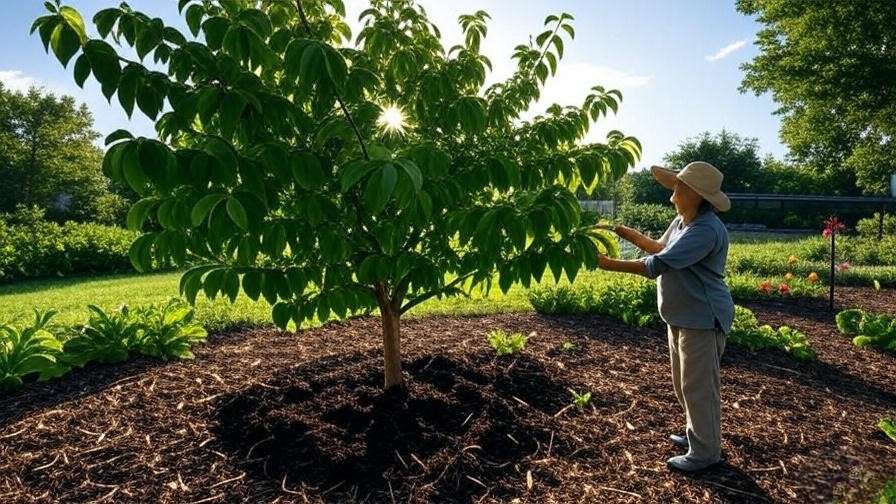Picture this: your cherry tree, once bursting with lush, green leaves, now looks droopy and parched, with wilting and drying foliage stealing its charm. If you’re wondering how to stop cherry tree leaves from wilting and drying out, you’re not alone. This common issue frustrates gardeners worldwide, but the good news is, it’s often fixable with the right care. In this comprehensive guide, we’ll uncover the causes of wilting cherry tree leaves and share expert-backed, practical solutions to restore your tree’s vibrant health. Backed by arborist insights and years of plant care expertise, this article will empower you to revive your cherry tree and keep it thriving year-round. Let’s dive in! 🌱
Understanding Why Cherry Tree Leaves Wilt and Dry Out 🌞💧
Before you can revive your cherry tree, it’s crucial to understand why its leaves are wilting or drying out. Identifying the root cause—whether environmental, nutritional, or pest-related—sets the stage for effective solutions. Here, we’ll break down the most common culprits and how to spot them.
Common Causes of Wilting and Drying Leaves
Cherry trees are sensitive to their environment, and several factors can lead to drooping or crispy leaves:
- Environmental Stress: Extreme heat, drought, or poor soil conditions can stress cherry trees, causing leaves to wilt or dry. For example, prolonged temperatures above 85°F can dehydrate foliage. 🌡️
- Watering Issues: Both overwatering and underwatering are common culprits. Overwatering suffocates roots, while underwatering starves them of moisture. 💦
- Nutrient Deficiencies: A lack of essential nutrients like nitrogen, potassium, or magnesium can weaken leaves, leading to yellowing or wilting. 🧪
- Pests and Diseases: Aphids, spider mites, or fungal infections like verticillium wilt can damage leaves, causing them to curl or dry out. 🐞
- Root System Problems: Compacted soil or root rot can restrict water and nutrient uptake, directly affecting leaf health. 🌱
How to Diagnose the Problem
Diagnosing the issue is your first step toward a healthy cherry tree. Here’s how to investigate:
- Check Visual Signs: Look for yellowing, curling, or crispy leaves. Browning edges often indicate drought stress, while soft, droopy leaves may suggest overwatering. 👀
- Test Soil Moisture: Use a soil moisture meter or dig 6 inches down to check if the soil is too wet or dry. Well-drained soil should feel moist but not soggy. 🕳️
- Inspect for Pests or Disease: Examine leaves and stems for sticky residue, webbing, or powdery coatings. A magnifying glass can help spot tiny pests like spider mites. 🔍
- Assess Environmental Factors: Is your tree in full sun or exposed to strong winds? Excessive sunlight or wind can dry out leaves quickly. ☀️
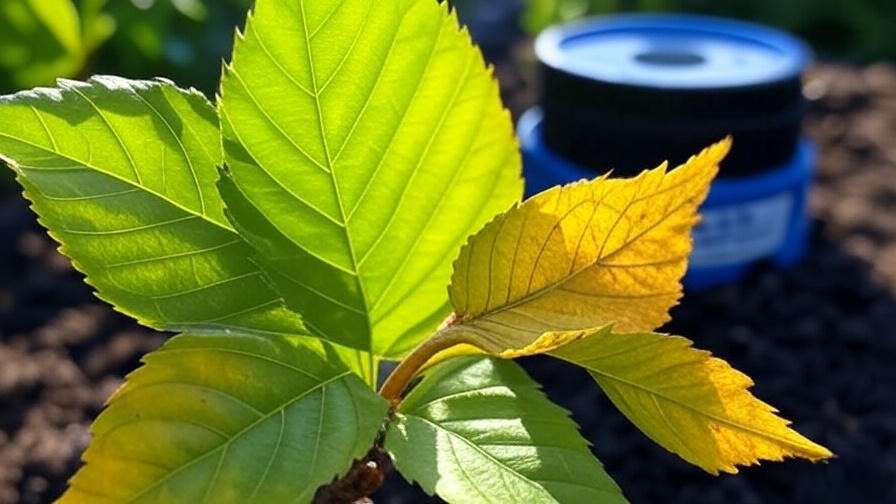
Expert Tip: Invest in a soil moisture meter (around $10–$20) to take the guesswork out of watering. Consistent monitoring can prevent both over- and underwatering. 🌧️
Immediate Steps to Stop Cherry Tree Leaves from Wilting 🌟
Once you’ve identified the cause, it’s time to take action. These immediate steps can help stop wilting and drying leaves and set your cherry tree on the path to recovery.
Adjust Watering Practices
Watering is often the key to reviving a wilting cherry tree. Here’s how to get it right:
- How Much Water?: Young cherry trees (1–3 years old) need about 5–10 gallons of water weekly, depending on climate. Mature trees may require 15–20 gallons during dry spells. 💧
- Watering Methods: Use deep watering to reach roots 12–18 inches below the surface. A soaker hose or drip irrigation system works best to deliver water slowly and evenly. Avoid surface sprinkling, which can evaporate quickly. 🚿
- Mulching: Apply a 2–4-inch layer of organic mulch (like wood chips or bark) around the tree’s base, keeping it 6 inches from the trunk. Mulch retains moisture and regulates soil temperature. 🌾
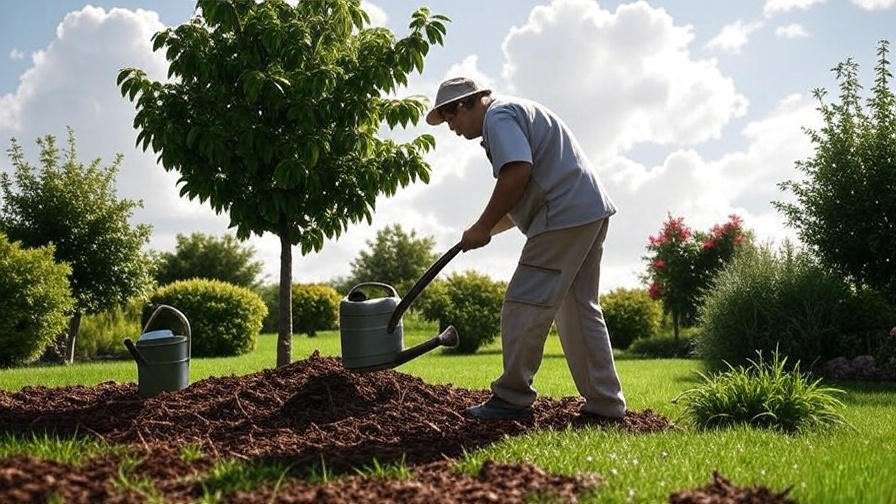
Example: Jane, a home gardener in California, noticed her cherry tree’s leaves wilting during a heatwave. By switching to deep watering twice a week and adding mulch, she saw greener, perkier leaves within two weeks.
Improve Soil Health
Healthy soil is the foundation of a thriving cherry tree. Poor soil can exacerbate wilting, so address these factors:
- Test Soil pH and Nutrients: Cherry trees prefer a pH of 6.0–6.8. Use a soil test kit (available at garden centers) to check pH and nutrient levels. Low nitrogen or potassium can cause leaf yellowing. 🧪
- Add Organic Matter: Incorporate compost or well-rotted manure into the top 6–12 inches of soil to boost nutrients and improve drainage. Aim for 2–3 inches of compost annually. 🌱
- Fix Drainage Issues: If soil stays soggy, dig trenches or add sand to improve drainage. Root rot, often caused by waterlogged soil, can mimic drought symptoms. 🚰
Protect from Environmental Stress
Environmental factors like heat and wind can dry out leaves quickly. Here’s how to shield your tree:
- Provide Shade: During heatwaves, use shade cloth or plant companion trees to reduce sun exposure. Aim for partial shade during the hottest part of the day (12–4 p.m.). ☂️
- Use Windbreaks: Plant shrubs or install burlap screens to block strong winds, which can desiccate leaves. 🌬️
- Time Pruning Wisely: Avoid pruning during hot, dry months, as it stresses the tree. Late winter or early spring is ideal for pruning cherry trees. ✂️
Pro Tip: If you’re in a windy area, consider planting a low-growing hedge like lavender around your cherry tree to act as a natural windbreak. 🌸
Tackling Pests and Diseases 🐛
Pests and diseases can wreak havoc on cherry tree leaves, causing wilting or drying. Early detection and treatment are key to saving your tree.
Identifying Common Cherry Tree Pests
Pests like aphids, spider mites, and scale insects can sap nutrients from leaves, leading to wilting. Here’s how to spot and manage them:
- Aphids: These tiny, pear-shaped insects cluster on leaf undersides, leaving sticky residue. Spray with insecticidal soap or neem oil weekly until gone. 🕷️
- Spider Mites: Look for fine webbing and stippled leaves. Rinse leaves with water and apply neem oil to control infestations. 🕸️
- Scale Insects: Hard, shell-like bumps on stems or leaves indicate scale. Use horticultural oil in early spring to suffocate them. 🌿
Organic vs. Chemical: For eco-conscious gardeners, neem oil or introducing ladybugs (natural aphid predators) can be effective. Chemical pesticides should be a last resort due to environmental impact. 🧴
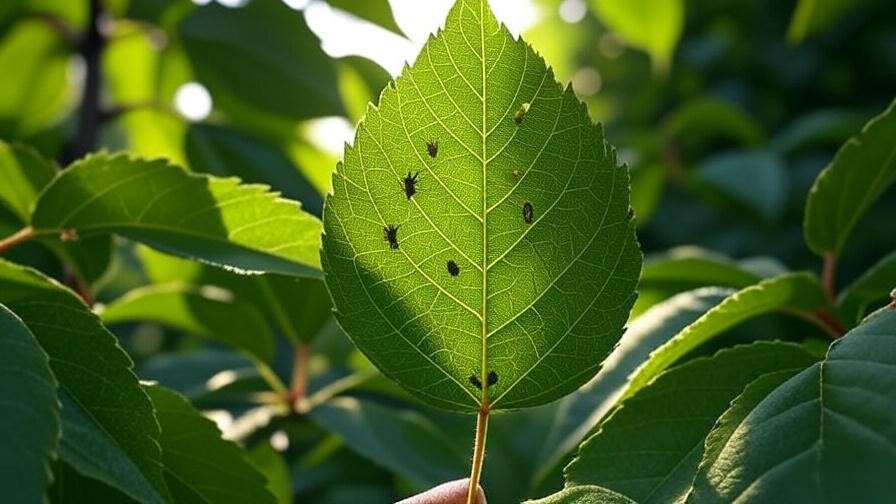
Managing Fungal and Bacterial Diseases
Fungal and bacterial diseases are common causes of leaf wilting in cherry trees. Here’s how to address them:
- Verticillium Wilt: This soil-borne fungus causes sudden wilting and browning. Remove affected branches and avoid planting susceptible trees in the same soil. 🍄
- Powdery Mildew: White, powdery patches on leaves can lead to drying. Apply sulfur-based fungicides or neem oil and improve air circulation by pruning. 💨
- Leaf Spot: Dark spots with yellow halos indicate bacterial or fungal leaf spot. Remove and destroy affected leaves, and apply copper-based fungicides. 🌱
Expert Insight: Certified arborist Dr. Emily Carter notes, “Early detection of verticillium wilt is critical. If you notice one-sided wilting, act fast by pruning and improving soil health to give your tree a fighting chance.”
Long-Term Care for Healthy Cherry Tree Leaves 🍒
Once you’ve addressed immediate wilting, focus on long-term care to keep your cherry tree’s leaves vibrant and healthy.
Nutrient Management for Vibrant Foliage
Proper nutrition prevents wilting and promotes lush foliage:
- Best Fertilizers: Use a balanced fertilizer (10-10-10 NPK) or one high in potassium (e.g., 5-10-15) for cherry trees. Organic options like fish emulsion or compost tea work well. 🌿
- Application Timing: Fertilize in early spring before bud break and again in late spring. Avoid late-season fertilizing, which can spur growth vulnerable to frost. 📅
- Avoid Over-Fertilization: Excessive nitrogen can cause lush, weak growth prone to pests. Follow package instructions and test soil first. 🌱
Pruning and Maintenance Tips
Regular pruning keeps cherry trees healthy and prevents stress-related wilting:
- When to Prune: Prune in late winter or early spring when the tree is dormant. Remove dead, damaged, or crossing branches to improve airflow. ✂️
- How to Prune: Use clean, sharp shears and cut at a 45-degree angle just above a bud. Avoid removing more than 25% of the canopy at once. 🌬️
- Seasonal Checklist:
- Spring: Fertilize, mulch, and inspect for pests.
- Summer: Monitor watering and protect from heat.
- Fall/Winter: Rake leaves to prevent fungal buildup and wrap young trees to protect from cold. 📋
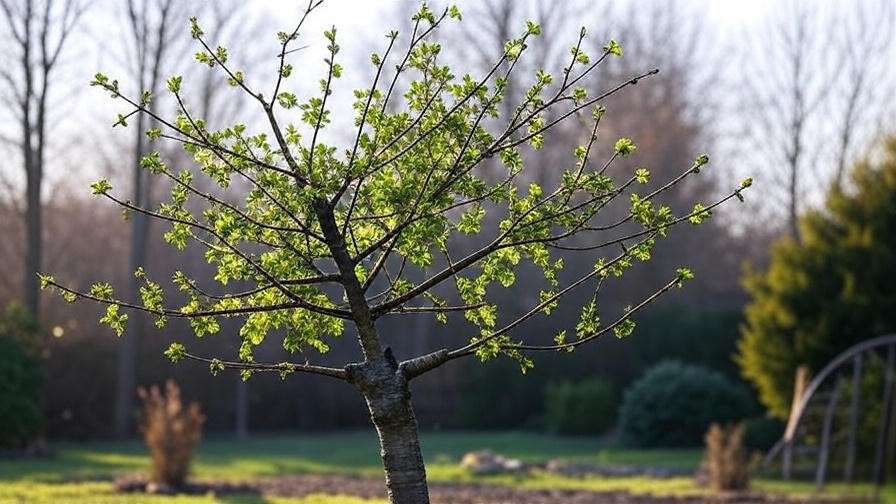
Choosing the Right Cherry Tree Variety
Some cherry tree varieties are more resistant to wilting and disease:
- Disease-Resistant Varieties: ‘Stella’ and ‘Bing’ are hardy choices with good resistance to fungal issues. 🍒
- Climate Matching: Choose varieties suited to your USDA hardiness zone. For example, ‘Montmorency’ thrives in cooler climates (zones 4–7). 🌍
Pro Tip: Plant companion plants like marigolds or garlic near your cherry tree to deter pests naturally. 🌼
Preventing Future Wilting and Drying 🌳
To ensure your cherry tree’s leaves stay lush and vibrant long-term, proactive care is essential. By establishing consistent routines and adapting to seasonal changes, you can prevent wilting and drying before they start. Here’s how to keep your cherry tree thriving.
Establishing a Consistent Care Routine
A regular care schedule is the backbone of healthy cherry trees. Here’s a practical plan to prevent leaf wilting:
- Weekly Tasks: Check soil moisture with a meter or by digging 6 inches down. Water deeply if the soil feels dry beyond the top inch. Inspect leaves for pests or unusual spots. 💧🔍
- Monthly Tasks: Monitor tree growth and prune lightly if needed to maintain shape. Apply a thin layer of compost around the base to boost soil nutrients. 🌱
- Weather Monitoring: Adjust watering during heatwaves or heavy rain. For example, increase watering frequency by 20% during prolonged dry spells. ☀️🌧️
Pro Tip: Set calendar reminders for monthly tree checks to stay on top of care tasks. Consistency prevents small issues from becoming big problems. 📅
Seasonal Care for Cherry Trees
Each season brings unique needs for cherry trees. Tailor your care to keep leaves healthy year-round:
- Spring: Fertilize with a balanced 10-10-10 NPK fertilizer as buds form. Inspect for aphids or fungal signs and treat early. Mulch to prepare for summer heat. 🌸
- Summer: Water deeply 1–2 times weekly, especially during hot weather. Use shade cloth during heatwaves (above 85°F) to protect leaves. Monitor for spider mites. ☀️
- Fall/Winter: Rake fallen leaves to prevent fungal buildup. For young trees, wrap trunks with tree guards to protect against cold and rodents. Apply a final layer of mulch before frost. ❄️
Case Study: Mark, a hobbyist gardener in Oregon, maintained a thriving cherry orchard by following a seasonal care routine. By adjusting watering in summer and protecting trees in winter, his ‘Bing’ cherry trees produced vibrant foliage and abundant fruit for over a decade. 🍒
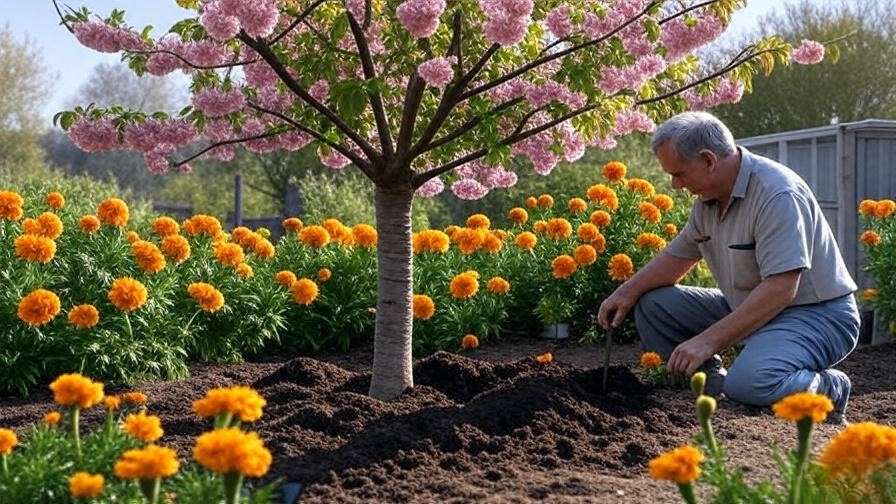
FAQs About Cherry Tree Leaf Wilting 🌿
To address common concerns, here are answers to frequently asked questions about cherry tree leaf wilting, designed to provide quick, actionable insights.
- Question: Can overwatering cause cherry tree leaves to wilt?
Answer: Yes, overwatering can lead to root rot, which prevents roots from absorbing oxygen, causing leaves to wilt. Check soil drainage by digging a test hole; water should drain within 24 hours. Improve drainage with sand or organic matter if needed. 🚰 - Question: How do I know if pests are causing the wilting?
Answer: Look for sticky residue (aphids), fine webbing (spider mites), or hard bumps (scale) on leaves and stems. Use a magnifying glass for accuracy. Treat with neem oil or insecticidal soap for organic control. 🐞🔍 - Question: Are some cherry tree varieties more prone to wilting?
Answer: Yes, some varieties, like ‘Royal Ann,’ are more susceptible to drought or fungal diseases. Opt for resistant cultivars like ‘Stella’ or ‘Lapins’ for better resilience in challenging climates. 🍒 - Question: Can I save a severely wilted cherry tree?
Answer: With prompt action, many trees can recover. Correct watering issues, treat pests or diseases, and improve soil health. If more than 50% of the canopy is affected, consult an arborist for professional assessment. 🌳
Conclusion: Keep Your Cherry Trees Thriving Year-Round 🌸
Wilting and drying cherry tree leaves can be disheartening, but with the right approach, you can restore your tree’s vibrant foliage and ensure its long-term health. By addressing immediate issues like improper watering, poor soil, or pests and adopting a consistent care routine, you’ll prevent future problems and enjoy a thriving cherry tree. Start by diagnosing the cause—whether it’s drought, nutrient deficiency, or disease—and apply the expert-backed solutions outlined in this guide. From deep watering and mulching to pruning and pest control, every step counts. 🌿
Take action today: check your cherry tree’s soil, adjust your watering habits, and inspect for pests. Your tree will thank you with lush, green leaves and, eventually, juicy cherries! Share your cherry tree care tips in the comments or explore more plant care guides on our site for additional insights. Backed by arborist expertise and practical, field-tested advice, this guide is your roadmap to vibrant cherry trees year-round. 🍒

